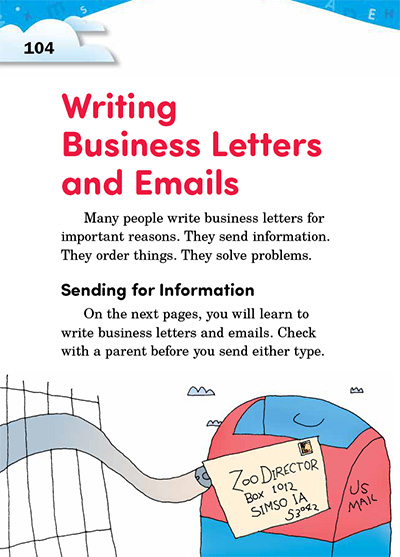Page 104 from

Start-Up Activity
Create a treasure map that leads to some part of your classroom. Have a treat hidden there, such as a bag of jelly beans.
Roll up your treasure map, put it into a bottle, and pass the a bottle around the classroom. Have students try to fish the map out of the bottle, using pencils, pens, paper clips, or whatever other means they can think of. The struggle to retrieve the message in the bottle will make it more exciting when finally a student succeeds in getting the map out. Have the student then lead the rest of the class in figuring out the clues and finding the snack.
While students enjoy their reward, point out how a letter in an envelope is just like a treasure map in a bottle. It gives the reader information that could lead to some sweet success. Let students know they will be creating their own letters and email messages in this chapter.
Think About It
“There is more treasure in books than in all the pirate's loot on Treasure Island.”
—Walt Disney

Start-Up Activity
Create a treasure map that leads to some part of your classroom. Have a treat hidden there, such as a bag of jelly beans.
Roll up your treasure map, put it into a bottle, and pass the a bottle around the classroom. Have students try to fish the map out of the bottle, using pencils, pens, paper clips, or whatever other means they can think of. The struggle to retrieve the message in the bottle will make it more exciting when finally a student succeeds in getting the map out. Have the student then lead the rest of the class in figuring out the clues and finding the snack.
While students enjoy their reward, point out how a letter in an envelope is just like a treasure map in a bottle. It gives the reader information that could lead to some sweet success. Let students know they will be creating their own letters and email messages in this chapter.
Think About It
“There is more treasure in books than in all the pirate's loot on Treasure Island.”
—Walt Disney